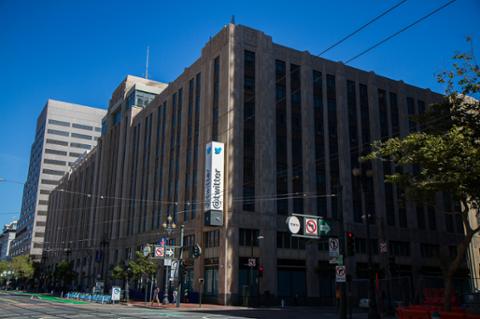Some of Silicon Valley’s biggest companies announced significant layoffs last week. What does that mean for the rest of the tech industry?
A week after he acquired Twitter for $44 billion, Tesla and SpaceX CEO Elon Musk reportedly slashed half the social-media giant’s workforce, equivalent to roughly 3,700 employees. According to Reuters and other news sources, Twitter employees received layoff notices via personal email after being told to stay away from the office on Nov. 4.
“In an effort to place Twitter on a healthy path, we will go through the difficult process of reducing our global workforce on Friday,” read the company’s Nov. 3 email to all employees. Musk had already terminated many in Twitter’s senior ranks, including its former CEO.
Using the hashtag #OneTeam, many current and former Twitter employees took to the platform to share their stories. “Looks like I’m unemployed y’all,” wrote @SBkcrn, a former Twitter community manager. “Just got remotely logged out of my work laptop and removed from Slack.”
“So grateful this is happening at 3am. Really appreciate the thoughtfulness on the timing front guys,” wrote @ChrisYounie, another employee.
Musk’s plans to boost Twitter’s revenue include charging $8 per month for user verification (the famous “blue check mark”) and other features. According to The New York Times, there are other revenue-generating ideas on the table, such as allowing users to send direct messages to “high-profile users” like celebrities for a small fee, along with paywalled video.
Meanwhile, Lyft announced it would slice 13 percent of its staff, equivalent to 680 employees. According to Axios, company co-founders Logan Green and John Zimmer blamed the layoffs on “the tough reality.”
Payments startup Stripe plans on cutting 14 percent of its workforce. “Our business is fundamentally well-positioned to weather harsh circumstances,” read the company’s explanation, posted on its official blog. “We provide an important foundation to our customers and Stripe is not a discretionary service that customers turn off if budget is squeezed. However, we do need to match the pace of our investments with the realities around us. Doing right by our users and our shareholders (including you) means embracing reality as it is.”
Unlike Twitter’s decision to dismiss employees via mass email, Stripe is apparently committed to doing it via 1:1 meetings. “We are going to set up a live, 1-1 conversation between each departing employee and a Stripe manager over the course of the next day,” the blog added. “If you are in an impacted group, look out for a calendar invitation.”
It’s important to note that many Silicon Valley companies, their profits buoyed by pandemic-era spending on cloud-based services and apps, went on aggressive hiring sprees in 2020 and 2021. Now that the economy has tightened somewhat, those companies are suddenly more mindful of their bottom lines—and that means cuts. But even if the news seems full of layoffs, keep in mind that companies everywhere will still need tech professionals for a variety of functions, from building websites to securing tech stacks against intrusion.


